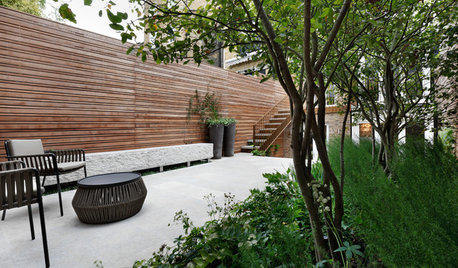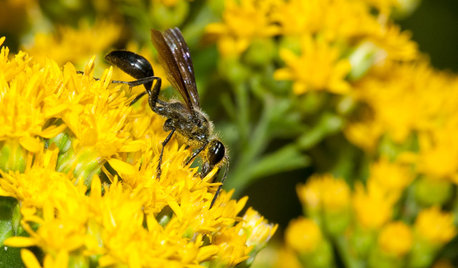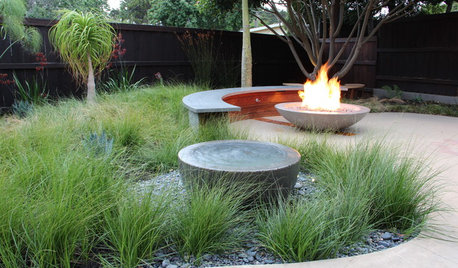Brown Thin Grass around Pear tree
prinesurf
10 years ago
Related Stories

EDIBLE GARDENSHow to Grow Your Own European and Asian Pears
Try these trees for their good looks, delicious fruit and wide range of sizes — plus you can espalier them
Full Story
GARDENING GUIDESHow to Keep Your Trees Healthy
Ensure your trees’ vigor for years to come with these tips for protecting roots, watering effectively and more
Full Story
WOODThe Power of Plywood All Around the House
Of course you've heard of it, but you might not know all the uses and benefits of this workhorse building material
Full Story
HOLIDAYSHouzz Call: Show Us Your Christmas Tree!
How lovely are your branches? Post a picture and share your stories
Full Story
URBAN GARDENSIn London, a Crowded Patch of Grass Becomes a Patio for Entertaining
A chic combo of wood siding, clever plantings and lots of elegant sandstone transforms a plain garden into a stylish space
Full Story
GARDENING GUIDESMeet the Grass-Carrying Wasp, a Gentle Pollinator of Summer Flowers
These fascinating insects nest in wood cavities and hollow plant stems
Full Story
GRASSES10 Ways to Use Ornamental Grasses in the Landscape
These low-maintenance plants can add beauty, texture and privacy to any size garden
Full Story
LANDSCAPE DESIGNIs It Time to Consider Fake Grass?
With more realistic-looking options than ever, synthetic turf can be a boon. Find the benefits and an installation how-to here
Full Story
LANDSCAPE DESIGNEnergize Your Landscape With Masses of Grasses
Create year-round interest with waves of attention-getting grasses for all kinds of yards
Full Story
CENTRAL PLAINS NATIVE PLANTS10 Top Grasses for the Central Plains
Low-maintenance grasses provide seasonal interest and wildlife habitat, and aid good design
Full StoryMore Discussions








dchall_san_antonio
prinesurfOriginal Author
Related Professionals
Ashland Landscape Architects & Landscape Designers · Fitchburg Landscape Architects & Landscape Designers · Owings Mills Landscape Architects & Landscape Designers · Roosevelt Landscape Architects & Landscape Designers · Wheeling Landscape Architects & Landscape Designers · Brockton Landscape Contractors · Fort Myers Landscape Contractors · Homewood Landscape Contractors · Lees Summit Landscape Contractors · North Chicago Landscape Contractors · Snoqualmie Landscape Contractors · Sugar Hill Landscape Contractors · University City Landscape Contractors · Grand Rapids Swimming Pool Builders · Redan Swimming Pool BuildersprinesurfOriginal Author
dchall_san_antonio
prinesurfOriginal Author